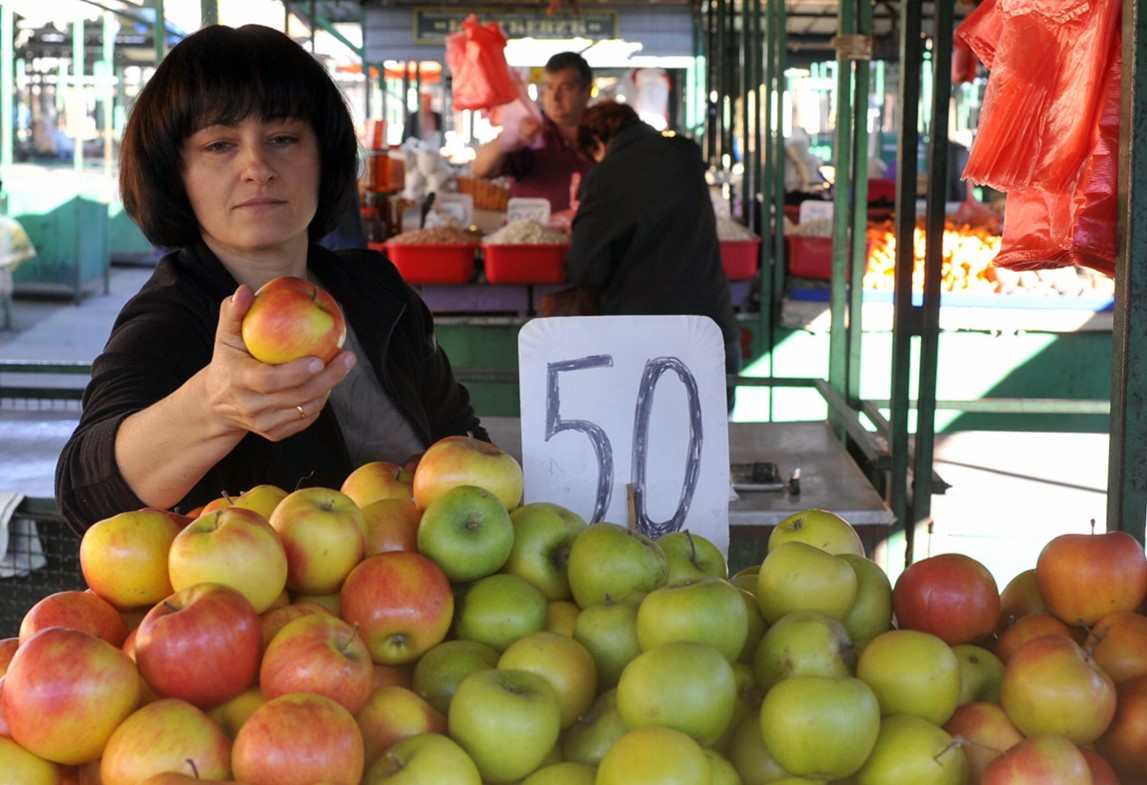Promoting Croatia’s fruit and vegetable sector

Croatia imports a great many of its fruits and vegetables. Yet with its rich tradition of fruit and vegetable production and the optimal climate and soil conditions to do so, the country has great potential to meet its growing demand for high quality produce and access export markets.
A targeted audience of representatives from Croatia’s government, producer organizations, processors, wholesalers and retailers attended a high-level forum in the capital, Zagreb, today to discuss how best to unlock that potential.
The event was organized by the European Bank for Reconstruction and Development (EBRD) and the Food and Agriculture Organization of the United Nations (FAO), along with Croatia’s Ministry of Agriculture, Croatia’s Chamber of Commerce and the Croatian Association of Young Farmers (YFA).
Marija Vučković, State Secretary for the Ministry of Agriculture, officially opened the forum and highlighted the importance of developing dialogue both with the public and private sectors, as a means to “identify and tackle the setbacks holding back development, and build consensus on the ways of making the Croatian horticulture sector stronger, more competitive and profitable.”
The forum’s participants went on to share lessons from a study tour to Italy earlier this year, organized by the EBRD and FAO. They also discussed the preliminary findings of an analysis by Wageningen University and Research Centre on business opportunities for Croatian fruit and vegetable producers and discussed ways forward for the Croatian horticultural sector. Through extensive interviews with a large number of participants from the fruit and vegetable sector – including those working in processing, distribution, wholesale and retail – as well as data analysis, the research highlights opportunities to improve supply chains and facilitate better linkages between suppliers and buyers.
Stronger producer organizations
Most of Croatia’s fruit and vegetable producers are small-scale farmers; many are either not familiar with modern production techniques or they lack the means to upgrade their operations, invest in research and influence markets. This means that production is fragmented and cooperation among producers, local food processing companies and retailers is weak.
The study tour to Italy’s Friuli-Venezia Giulia and Emilia Romagna regions shed light on the benefits of well-functioning agricultural cooperatives, which include greater efficiency up and down the supply chain, and thus offered a glimpse into practices replicable in the Croatian horticulture sector.
In particular, the visits to Italian agriculture cooperatives enabled the group to see how different production techniques – including precision horticulture – can enhance the quality and taste of products. Practical demonstrations were provided on the use of food safety and quality controls, as well as on environmentally-friendly production methods such as Integrated Pest Management.
In organizing the study tour, the EBRD and FAO worked closely with LegaCoop, Italy’s oldest cooperative organization which counts more than 15,000 member cooperatives. Italian agricultural cooperatives – going strong for more than 100 years – help producers access everything from inputs, the latest technologies and knowledge, to financing and new markets, both in Italy and abroad.
“It’s clear that you can accomplish so much more by working together than you can on your own,” said Jan Marinac, President of the YFA.
“We need continued support to bring our horticulture sector up to speed with the latest developments, including food safety and quality controls, and to better organize our farmers, whether in cooperatives, associations or producer groups,” he added.
Vedrana Jelušić Kašić, EBRD Director for Croatia, Slovenia, Hungary and Slovakia, emphasized the need to form cooperatives and producer organizations to help "achieve economies of scale in sales as well as in accessing modern technology and sharing knowledge. In this sense, it is necessary to empower these organizations in order for them to achieve market success.”
Andriy Yarmak, an FAO Economist, explained that better coordination and organization along the supply chain benefits everyone.
“Croatian producers will have more predictable buyers, retailers and processing companies will be able to source local produce more efficiently, and consumers will have better access to good quality produce from the country,” he said.
The driving force of tourism
The forum also touched on the potential of tourism as a driving force for Croatian food and agricultural products. Croatia attracts throngs of tourists each year, especially along its Adriatic Coast, and the horticulture sector has the opportunity to build on this unique characteristic by linking tourism to agriculture through the promotion of its products.
“The growth of tourism in Croatia could provide some interesting opportunities for local fruit and vegetable producers,” said Vedrana Jelušić Kašić. “Tourists are drawn to traditional foods and good quality products unique to an area, which can be a huge boost for rural economies and help smaller producers enter into new markets.”
These activities were part of an EBRD/FAO project to strengthen the capacity of the YFA to foster innovation, investment and growth in the horticulture sector, which also contributes to efficient and inclusive agrifood systems.
This project continues the EBRD and FAO’s collaboration. Since 1995, the EBRD has invested more than EUR 620 million in Croatia’s agribusiness sector. More recently, the EBRD and FAO supported the development and registration of Croatia’s first two Geographic Indications at European Union level, including one for mandarins from the Neretva Valley and sausage from Slavonia.
